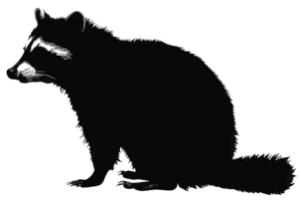Humane Animal Removal
Wild animals cause damage to properties and expose humans and domesticated animals to diseases and harmful bacteria. Additionally, wild animals pose a safety risk and could attack if they feel threatened. The last thing a homeowner needs is wild animals running around the home and yard. Having wildlife removed from a property raises many questions and concerns, including “Are there humane animal removal services available?”
The answer to that question is “Yes.” Several animal trapping companies utilize humane animal removal methods to help free a property of wildlife and safely relocate the animals elsewhere.
What is Humane Animal Removal?
Some animal removal specialists use chemicals, electronic devices, and sometimes kill animals. These methods are not humane. Humane animal removal uses safe equipment designed not to harm the animal upon trapping it. Once trapped, the animal is released into protected habitats using respectful relocation methods. This method of animal removal allows the homeowner to have peace of mind that their yard is free of wildlife while still protecting the safety and health of the critter.
What Animals Are Removable?
Just about any wild animal can be trapped, removed, and relocated from a property. Some of the most common critters removed by animal trappers include foxes, rodents, moles, snakes, raccoons, bats, and squirrels. Other animals needing removal may consist of armadillos, porcupines and skunk removal.
What Are the Dangers of Wild Animals?
All wild animals carry diseases, bacteria, and parasites, which can be a significant health hazard for humans and domesticated animals. Rodents, such as mice and rats, have many dangerous diseases and should immediately be removed from a home. Common diseases and parasites carried by wildlife include leptospirosis, rabies, tapeworm, fleas, mange, and canine hepatitis. Diseases can be transferred through direct contact, a bite, or through their urine and feces.
Are There Other Risks from Wild Animals?
It is not common for wild animals to attack a person or pet without provocation. However, when feeling threatened or protecting their young, wild animals can attack, causing damage and spreading diseases. While searching for food, water, and shelter, wild animals can tear up yards, destroy concrete work, chew on wires creating fire hazards, and gnaw on wood.
Where Can Wild Animals Be Trapped?
Wild animals make their homes wherever they find food, water, and shelter. Animal trappers have developed strategies to humanely remove these animals from just about any area of a home or property. Squirrels, raccoons, and bats prefer to make themselves at home in attics, chimneys, and crawl spaces. Even though these locations seem near impossible to capture and remove an animal humanely, animal removal specialists have the experience to carefully and successfully remove the animal.
Other locations where wild animals are found nesting include under porches, in sheds, in garages, under woodpiles, and shrubbery.
Is Habitat Modification a Humane Method to Keep Animals Away?
Habitat modification is the most humane method to keep wild animals away. Though it is not a removal method, the best defense against wild animals is not to encourage them to nest on a property. Instead, remove any food, water, or shelter sources from the property. Cut back brush and overgrown vegetation: seal trash cans and any entry points into the home. Mechanical owls or other devices creating a threatening sound also help deter and keep some animals away.
Though habitat modification helps keep animals away, there are many times when an animal trapper is needed. When hiring an animal removal specialist, inquire about their trapping, removal, and relocation methods to ensure they are humane. Hiring a company that utilizes humane trapping methods helps ensure the animal’s safety throughout the entire process.





















